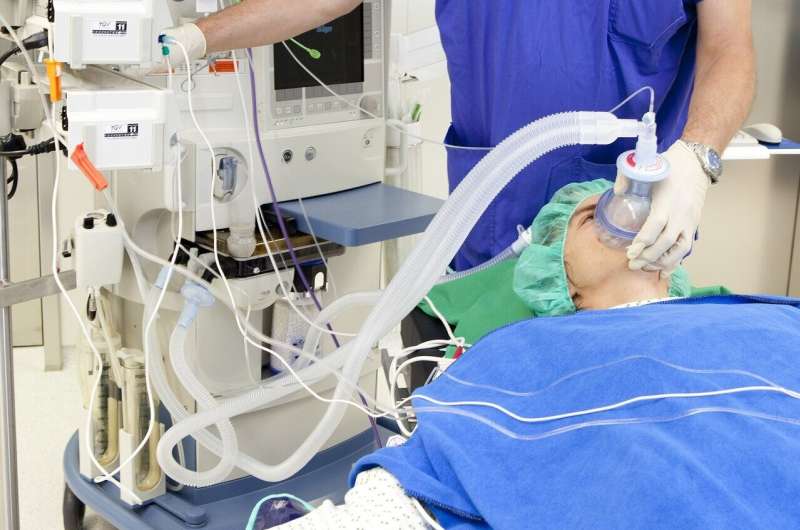This article has been reviewed according to Science X's editorial process and policies. Editors have highlighted the following attributes while ensuring the content's credibility:
fact-checked
peer-reviewed publication
proofread
New guidance: Quantitative monitoring of neuromuscular blockade is vital for patients undergoing anesthesia

Patients receiving neuromuscular blocking medications as part of their anesthetic regimen should be carefully monitored to ensure the best care and outcomes, according to recent—and independently developed—guidelines from the American Society of Anesthesiologists (ASA) and the European Society of Anaesthesiology and Intensive Care (ESAIC). Today, the organizations published a joint letter in Anesthesiology, encouraging widespread implementation of the recommendations in the guidelines.
Medications that provide neuromuscular blockade are frequently used in anesthesia, both to ease the placement of a breathing tube at the beginning of the anesthetic (intubation) and to provide optimal conditions for the surgery itself. Both ASA and ESAIC guidelines for the management of neuromuscular blockade recommend patients be monitored quantitatively as part of the process, meaning that the degree of muscle relaxation is frequently checked using devices that measure the depth of muscle relaxation.
When neuromuscular blockade is not monitored, patients are at a higher risk of post-procedure weakness and lung problems, such as pneumonia and bronchitis. Current data suggest there is a high incidence of inappropriate management of neuromuscular blockade, and therefore, a higher rate of these complications than if quantitative monitoring were universal.
A European survey of 17,150 patients who received neuromuscular blocking drugs found that neuromuscular monitoring was not performed in more than half (10,000) of patients, and the practice was similar in the U.S., the organizations note.
"Despite being developed completely independently, the guidelines from both organizations are nearly identical, which shows the evidence for these guidelines is sound," said ASA President Michael W. Champeau M.D., FAAP, FASA. "To meaningfully improve patient care and outcomes, these guidelines must be implemented widely through a systematic approach."
The joint letter recommends:
- Restructuring the clinical environment by placing quantitative monitors in all anesthetizing locations;
- Employing education efforts in anesthesia departments and with individual physicians;
- Providing performance feedback in the department and for individual physicians;
- Appointing a local champion who is supported by leaders.
"The collaboration between the two leading scientific societies in anesthesiology, ASA and ESAIC, holds great significance in terms of its impact on patient care and outcomes," said Prof. Edoardo De Robertis (IT), MD, Ph.D., ESAIC president 2022-2023, director of anesthesia and intensive care at the University of Perugia, Italy. "By working in tandem, we can expedite the spread and application of our meticulously crafted guidelines within clinical settings, thereby enhancing the safety and quality of patient care on a global scale. This unified approach will foster seamless cooperation and facilitate the adoption of best practices worldwide."
Both sets of guidelines recommend:
- Using stimulation of the ulnar nerve—one of the nerves in the hand—with quantitative neuromuscular monitoring at the thumb;
- Using sugammadex instead of neostigmine for deep or moderate neuromuscular blockade induced by rocuronium;
- Using neostigmine as a reasonable alternative to sugammadex for minimal neuromuscular blockade (train of four, or TOF, ratio 0.4 to <0.9) induced by rocuronium;
- Depending on clinical judgment in the context of quantitative monitoring, neostigmine may be considered for a depth of block deeper than minimal, with the understanding that deeper blocks will require more time to attain a TOF ratio greater than or equal to 0.9.
More information: Thomas Fuchs-Buder et al, Joint Letter to the Editor from the American Society of Anesthesiologists and the European Society of Anaesthesiology and Intensive Care on Management of Neuromuscular Blockade, Anesthesiology (2023). DOI: 10.1097/ALN.0000000000004630




















